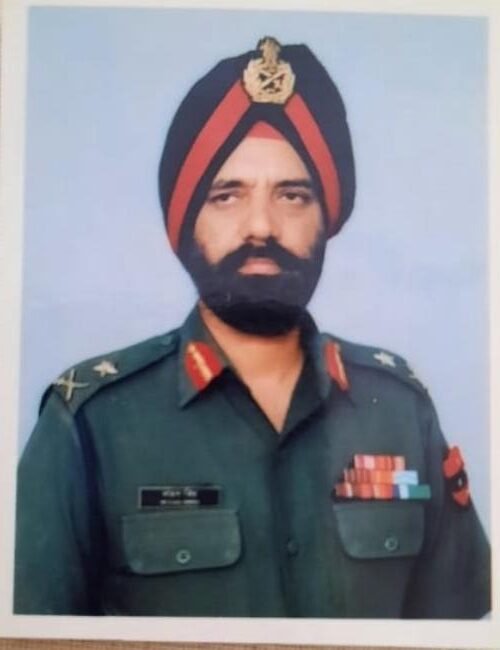










The theme for this year’s celebrations is ‘Naya Bharat’, aimed at reinforcing the country’s progress and aspirations

Prime Minister Narendra Modi will lead the nation in celebrating the 79th Independence Day on Friday, with this year’s events highlighting the success of Operation Sindoor.
“The success of Operation Sindoor will be celebrated during the Independence Day celebrations this year,” the Ministry of Defence said. Floral decorations at the venue will draw inspiration from the operation, and invitation cards will feature its logo as well as a watermark of the Chenab Bridge, symbolising the rise of ‘Naya Bharat’ (New India). One of the two Indian Air Force helicopters showering petals will also carry a flag depicting Operation Sindoor.
On arrival at the Red Fort, Modi will be received by Defence Minister Rajnath Singh. A combined Inter-Services and Delhi Police guard will present the salute, followed by the Prime Minister’s inspection of the Guard of Honour. At the flag-hoisting ceremony, Flying Officer Rashika Sharma will assist Modi. The event will be accompanied by a 21-gun salute.
The 96-member Guard of Honour will comprise 24 personnel each from the Army, Navy, Air Force and Delhi Police, led by Wing Commander AS Sekhon. Major Arjun Singh will command the Army contingent, Lieutenant Commander Komaldeep Singh the Naval contingent, Squadron Leader Rajan Arora the Air Force contingent, and Additional DCP Rohit Rajbir Singh the Delhi Police contingent.
The theme for this year’s celebrations is ‘Naya Bharat’, aimed at reinforcing the country’s progress and aspirations. Around 2,500 NCC cadets will sing the National Anthem, and the Prime Minister will address the nation.
Approximately 5,000 special guests from diverse backgrounds have been invited, including members of India’s Special Olympics 2025 contingent, winners of international sporting events, gold medallists from the Khelo India Para Games, top-performing farmers under various government schemes, outstanding sarpanches from key rural initiatives, young authors under the PM-YUVA scheme, skilled youth trained under PM-VIKAS, successful entrepreneurs from the SC/ST community, beneficiaries of the PM Awaas Yojana and Delhi schoolchildren who have won quiz competitions.

During a remarkable event termed “Dronathan,” troops from the Gurj Division of the Indian Army, part of the IX Corps, demonstrated an extraordinary feat of innovation and operational readiness by assembling 50 drones in just three hours.
This impressive accomplishment took place at Mamun Military Station in Punjab and highlighted the Indian Army’s commitment to integrating advanced technology and rapid deployment capabilities within its ranks.
The exercise showcased not only the technical expertise of the soldiers but also the efficiency of their teamwork and coordination underlined by rigorous training. Constructing 50 drones within such a short time frame is a testament to the Army’s evolving capabilities in drone technology, vital for modern warfare and surveillance operations.
The drones assembled are expected to enhance the Army’s operational reach, situational awareness, and tactical effectiveness in various environments, including counter-terrorism and reconnaissance missions.
This achievement reflects the Indian Army’s strategic focus on self-reliance and technological empowerment as it increasingly incorporates drone technology in its infantry battalions.
Such advancements align with broader efforts to develop indigenous defence technologies, ensuring swift deployment of unmanned systems that augment ground forces with aerial support.
Overall, the rapid assembly of these drones signifies a significant leap in military preparedness and technological acumen, reinforcing the Indian Army’s reputation as a forward-looking and innovation-driven force capable of responding effectively to contemporary security challenges.
The event stands as a strong example of mission readiness, technical skill, and the successful adaptation of cutting-edge technology for defence applications.
Agencies

India’s naval strength significantly surpasses that of Pakistan in virtually every dimension—fleet size, technological depth, operational doctrine, and indigenous capability. India currently fields a fleet of around 290 vessels, featuring two operational aircraft carriers (INS Vikrant and INS Vikramaditya), 11 destroyers, 12 frigates, 18 corvettes, and 18 submarines, including nuclear-powered platforms.
In stark contrast, Pakistan’s fleet includes 148 ships, with no aircraft carriers or destroyers, 15 frigates, 16 corvettes, and 16 submarines, the majority being older-generation diesel-electric models.
The doctrines guiding these fleets also reflect divergent ambitions and strategic priorities. India follows a blue-water strategy—focused on projecting naval power across the Indo-Pacific, safeguarding sea lanes, and providing credible deterrence against regional threats.
The presence of aircraft carriers enables integrated air-sea operations, extending the operational reach of India’s navy through MiG-29K fighters and multiple helicopter squadrons. Pakistan’s naval doctrine, on the other hand, remains primarily defensive and coastal. Lacking carrier aviation, it relies instead on land-based aircraft with limited operational endurance, focusing mainly on protecting its maritime trade corridors and coastline.
India’s warships are generally more advanced and heavily armed. Kolkata-class destroyers, for example, are equipped with BrahMos supersonic cruise missiles and Barak-8 air defense systems, providing superior long-range strike and multi-layered defense. By contrast, Pakistan’s most modern surface combatants—Tughril-class frigates—feature fewer vertical launch cells and less sophisticated sensor and radar technology, making them less capable in both offensive and defensive operations.
Subsurface capabilities further tip the balance in India’s favor. India operates nuclear-powered ballistic missile submarines like INS Arihant, critical for second-strike nuclear deterrence and extended undersea patrols. Pakistan’s submarine fleet consists mainly of older Agosta-90B diesel-electric submarines; more modern Hangor-class boats sourced from China remain in the pipeline and are not yet commissioned. This disparity limits Pakistan’s strategic flexibility underwater and strengthens India’s dominance at sea.
A significant qualitative edge for India lies in indigenous shipbuilding. Over 80% of India’s naval vessels are domestically designed and constructed, fostering self-reliance, resilience to international supply chain shocks, and the ability to innovate at pace. By contrast, Pakistan is heavily dependent on Chinese imports and technical assistance, curbing its operational independence and modernization tempo.
Ultimately, while India’s navy is built for technological, operational, and strategic dominance—capable of high-end warfighting and power projection across large oceanic areas—Pakistan’s navy is geared toward regional defence and is technologically less sophisticated. This imbalance is likely to remain, given India’s ongoing investments in indigenous capacity, high-end platforms, and strategic partnerships.
Based On Republic World Report

The United States government has declined to directly answer queries regarding whether Pakistan lost any of its F-16 fighter jets during Operation Sindoor, a fierce 88-hour battle between India and Pakistan held from May 7 to May 10, 2025, reported NDTV.
When asked by NDTV, the US State Department referred the question back to the Government of Pakistan, stating, “We refer you to the Government of Pakistan to discuss its F-16s.” ‘Ask Pakistan’ is the succinct message the US conveyed to NDTV.
This refusal to comment comes despite the fact that US contractors, known as Technical Support Teams (TSTs), are stationed in Pakistan around the clock precisely to monitor and track the use and status of Pakistan’s US-built F-16s.
These teams operate under detailed end-use agreements between Washington and Islamabad, which specify the conditions under which Pakistan may employ these fighter jets in combat and underpin the continued US support for maintaining the Pakistani F-16 fleet. Consequently, TSTs are contractually obliged to be fully aware of the operational status and location of every Pakistani F-16 at all times.
This US stance contrasts with an earlier account from 2019, after India’s air strikes on the Balakot terror facility. At that time, according to two senior US defence officials quoted by Foreign Policy Magazine, the US conducted a physical count of Pakistan’s F-16s and found none missing, contradicting Indian claims that a Pakistani F-16 had been shot down in aerial combat.
The US indicated in 2019 that if Pakistan used F-16s defensively in response to Indian incursions, that did not breach the end-use agreement, but offensive use would constitute a violation.
Currently, Indian military assessments suggest Pakistan lost several F-16s during Operation Sindoor, either destroyed on the ground by Indian Air Force (IAF) strikes or shot down in air combat. Notably, Indian Air Chief Marshal AP Singh stated that the Jacobabad airfield, one of the primary targets, had an F-16 hangar that was partially destroyed during the strikes.
He indicated there were F-16s undergoing maintenance inside that hangar, likely damaged or destroyed. The IAF also claims to have shot down six Pakistani aircraft during the operation, including at least five fighter jets and one potentially large reconnaissance or electronic intelligence aircraft.
In response to Indian claims and the US silence, Pakistan’s Defence Minister Khawaja Muhammad Asif challenged India to open the inventories of aircraft losses for independent verification, implying that India’s claims were false or exaggerated.
The US Department of Defence has, in past Freedom of Information Act responses, refused to compile or release information about Pakistani F-16 losses, citing that they are not obligated to answer such specific operational questions. Similarly, inquiries to the Pentagon and the office of the US Secretary of Defence for Public Affairs on this issue have gone unanswered.
The US maintains continuous oversight of Pakistan’s F-16s through on-ground contractor teams mandated by end-use agreements, it has declined to confirm or deny specific losses of Pakistani F-16s during Operation Sindoor and has redirected queries to the Pakistani government.
This position contrasts with Indian military claims of losses inflicted on the Pakistani air force during the intense hostilities, underscoring the ongoing opacity and contested narratives regarding the battle’s aerial toll.
Based On NDTV Report
Body of the 31-year-old soldier from Telangana was taken to Uri sub district hospital for medico-legal formalities

Army soldier dies after slipping down slope in J-
Army personnel patrol along the Line of Control (LoC) amid heightened security ahead of Independence day at Uri sector in Baramulla district of Jammu and Kashmir on Tuesday. PTI Photo
An army soldier died after slipping down a slope during a routine patrol near the Line of Control in Uri sector of Jammu and Kashmir, officials said on Tuesday.
Sepoy B Anil of Maratha Light Infantry, while patrolling a border post, slipped and died on the spot on Monday, the officials said.
They said the body of the 31-year-old soldier from Telangana was taken to Uri sub district hospital for medico-legal formalities.
“Chinar Corps deeply regrets the loss of precious life of Braveheart Sepoy Banoth Anil Kumar, while performing operational duty along the Line of Control in Baramulla district,” Srinagar-based Chinar Corps posted on its X handle.
“Chinar Warriors salute his immense valour and sacrifice, express deepest condolence and stand in solidarity with the bereaved family,” it added.

Night curfew has been imposed in areas up to two kilometres from International Border in Samba district, an area used by terrorists from Pakistan to enter Jammu region.
Officials said the administration took the decision after talking to various stakeholders in the security establishment. The area, which shares its borders with Pakistan, had been witnessing night curfews till first week of January this year. The fresh imposition of night curfew was done to support Border Security Force (BSF) operations and strengthen security, the officials said.
According to an official order issued by Samba District Magistrate Ayushi Sudan, the restrictions will be in place daily from 10 pm to 5 am for the next two months, unless withdrawn earlier.
“The decision was taken in coordination with security agencies to enhance border monitoring and prevent unlawful activities by regulating civilian movement during night hours,” the order said.
It said any movement during curfew hours will be permitted only for valid reasons and individuals must produce identification when asked by BSF or police personnel.
The mall’s ‘End of Season Sale’ will run from August 15 to 17, with flat 50% off across select brands

Nexus Elante Mall is all set to mark Independence Day with a vibrant celebration honouring India’s heritage, unity, and Armed Forces.
The highlight of the day will be performances by the Indo-Tibetan Border Police (ITBP) Band at 5 pm in the mall courtyard, followed by the CRPF Band. Visitors can also witness a CRPF Artillery Display from 3 pm, offering a rare glimpse into India’s defence prowess. A dog show will also be held on the occasion.
To round off the celebrations, the mall’s ‘End of Season Sale’ will run from August 15 to 17, with flat 50% off across select brands.
Move comes after BSF’s praiseworthy performance in Operation Sindoor

In a significant development, the Centre has approved the first ever cadre review of Border Security Force (BSF) Group B and C employees, spanning from Constable to Inspector level ranks and its implementation has already been initiated.
The much-awaited decision is seen as a recognition of the force’s expanding role in national
security, especially following its critical performance during Operation Sindoor.
According to official sources, the implementation will cover a total immediate promotions slate of 23,710 personnel. Resultantly, 8,116 promotion orders in different ranks have already been issued with effect from August 13.
The review is expected to improve promotion avenues from Constable to Inspector that will provide significant respite to them from existing stagnation, thus enhancing overall morale and professional development of force personnel, sources informed further.
BSF personnel’s role in Operation Sindoor was praised by the Prime Minister and Home Minister as well as by top commanders of the armed forces.

























































